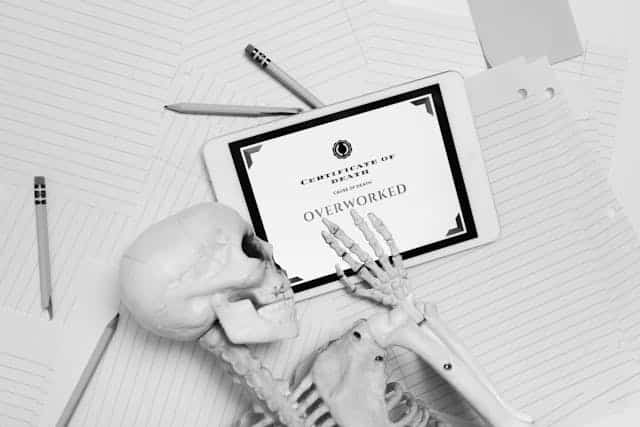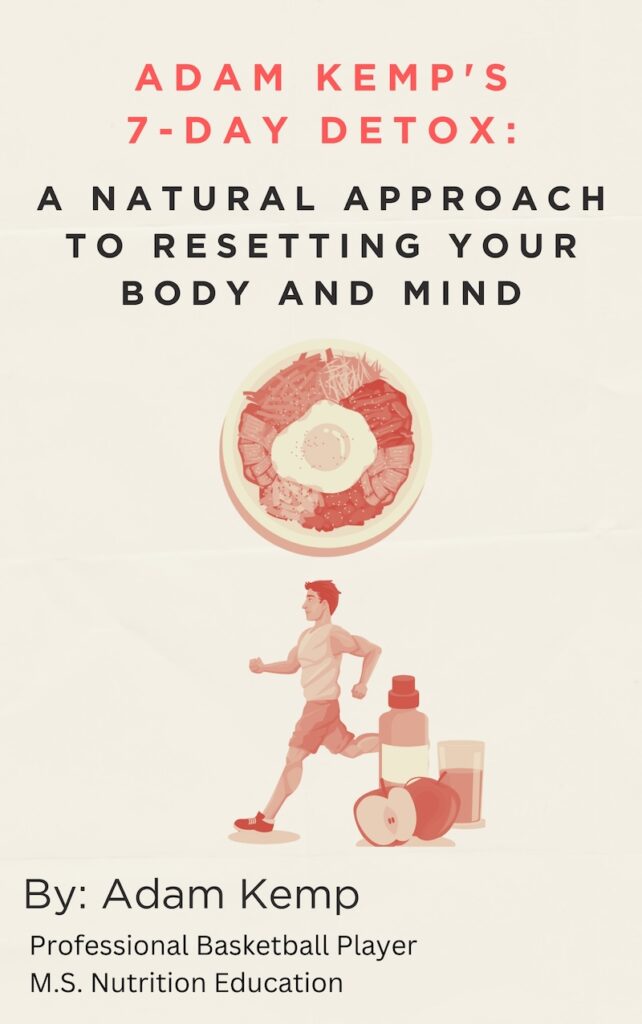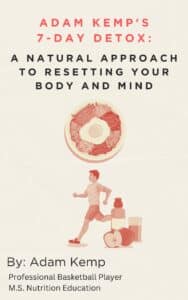How to Recover From Burnout at Work: Natural, Effective Solutions
Learning how to recover from burnout at work is essential for restoring your energy, motivation, and sense of purpose when stress begins to take over.
Burnout isn’t just fatigue; it’s a deep emotional and physical exhaustion that can drain your creativity, productivity, and passion.
Many professionals today are pushing past their limits, ignoring the early warning signs until even simple tasks feel overwhelming.
I’ve experienced this firsthand during demanding basketball seasons, where constant pressure and lack of rest blurred the line between ambition and exhaustion.
Rebuilding your balance starts with recognizing the signs, setting boundaries, and making time for recovery so you can truly recover from burnout at work and feel fulfilled again.
What is Work Burnout?

Work burnout is a state of chronic physical and emotional exhaustion caused by prolonged exposure to stress and unrealistic demands in the workplace.
It doesn’t arrive suddenly.
Instead, it builds quietly over time, draining your motivation, creativity, and mental clarity until even simple tasks feel overwhelming.
Your body often recognizes burnout before your mind does.
Subtle warning signs like fatigue, headaches, insomnia, or changes in mood are early indicators that you’re pushing past healthy limits.
Ignoring these signals can lead to deeper exhaustion, anxiety, and decreased performance at work.
A systematic review of prospective studies found that job burnout is linked to serious physical, psychological, and occupational consequences, underscoring the importance of early recognition and proactive recovery strategies (Salvagioni et al., 2017).
As a professional basketball player, I’ve experienced similar cycles of overtraining, which is essentially pushing through fatigue until the body forces you to stop.
The same principle applies in the workplace: when you ignore stress and overextend yourself, burnout eventually limits your ability to perform and thrive.
Learning to identify the signs of work burnout early is the first step toward protecting your health, maintaining productivity, and rebuilding balance in your career.
Signs of Work Burnout

Recognizing the signs of work burnout early is crucial for protecting your physical health, mental clarity, and long-term productivity.
Burnout rarely happens overnight, and it develops gradually as chronic stress and fatigue take their toll.
Below are some of the most common signs of work burnout to watch for:
- Constant Fatigue: Feeling physically and mentally drained, even after rest or sleep.
- Loss of Motivation: Tasks that once inspired you now feel meaningless or overwhelming.
- Irritability or Mood Swings: Heightened frustration, impatience, or emotional volatility toward colleagues or loved ones.
- Difficulty Concentrating: Trouble staying focused, remembering details, or completing tasks efficiently.
- Physical Symptoms: Frequent headaches, muscle tightness, digestive issues, or changes in appetite and sleep patterns.
- Cynicism and Detachment: Developing a negative attitude toward your job, coworkers, or responsibilities.
- Reduced Performance: Decline in work quality, creativity, or productivity due to exhaustion and disengagement.
In my career as a professional athlete, I’ve learned that ignoring early signs of exhaustion, like poor recovery, brain fog, or lack of enthusiasm, always leads to decreased performance.
The same applies in the workplace: if you push through without rest, burnout only worsens.
Listening to these warning signs and taking action early allows you to recover from burnout at work, rebuild balance, and restore genuine passion for what you do.
How to Prevent Burnout From Work

Preventing burnout from work is one of the most important health tips for office workers, and it starts with recognizing that balance is a necessity for long-term success and well-being.
Chronic stress, long hours, and constant digital connectivity can slowly deplete your energy and enthusiasm, making recovery much harder once burnout sets in.
By taking proactive steps to manage your workload, prioritize rest, and create healthy boundaries, you can protect both your productivity and your mental health.
As someone who’s experienced the toll of overtraining and exhaustion as a professional athlete, I’ve learned that prevention is always more effective than recovery.
Implementing small, consistent strategies now can help you stay energized, focused, and resilient, so you never have to fully recover from burnout at work in the first place.
Rest: The Ultimate Reboot
Rest is the foundation of recovery, both for athletes and professionals learning how to recover from burnout at work.
Chronic stress and lack of sleep impair focus, productivity, and decision-making, creating a cycle of exhaustion that’s hard to escape.
I’ve learned this firsthand during intense basketball seasons.
Skipping recovery days led to fatigue and injuries that could’ve been avoided with proper rest.
The same applies in the workplace: pushing through tiredness only drains your energy and creativity further.
To reset your body and mind, prioritize quality sleep and take short breaks throughout the day.
A consistent bedtime routine, reduced screen exposure before bed, and a comfortable sleep environment can dramatically improve recovery and resilience.
Natural sleep supplements can also be powerful tools for restoring deep, rejuvenating rest.
Ingredients such as magnesium, zinc, tart cherry, ashwagandha, and melatonin have been shown to support the body’s natural sleep-wake cycle, reduce stress hormones, and enhance restorative REM sleep (Abbasi et al., 2012).
For those seeking a clean, non-melatonin option, I personally recommend The Raw Botanics Co. REST & Refresh.
This adaptogen for sleep blend combines Reishi mushroom, CBD, and CBN to promote relaxation, calm the nervous system, and improve sleep quality without dependency.
It’s an excellent way to support your body’s recovery process naturally.
I also suggest Qunol Magnesium Glycinate as a high-quality magnesium supplement for sleep and stress management.
Last update on 2025-11-26 / This article includes affiliate links/Images via Amazon Product Advertising API. I may earn commissions on purchases made through these links.
A well-rested mind is sharper, more creative, and far better equipped to handle daily stress.
By prioritizing sleep and rest, you strengthen your ability to perform, stay balanced, and truly recover from burnout at work.
Stay Connected
Isolation often deepens burnout.
When stress becomes overwhelming, it’s natural to pull away from family, friends, and coworkers.
However, disconnection only amplifies exhaustion and anxiety.
Maintaining social bonds is one of the most effective ways to recover from burnout at work because genuine connection restores emotional balance and perspective.
Research consistently shows that social support significantly reduces burnout symptoms, particularly when combined with stress-management practices and structured interventions (Ruisoto et al., 2021, Madigan et al., 2023).
Open conversations, empathy, and shared experiences help regulate stress hormones and improve overall mental well-being.
Even during my busiest basketball seasons, I make time for my family.
Their understanding and encouragement help me decompress and reset mentally after demanding games or travel.
Sometimes, I’ll call old teammates just to talk through the highs and lows of the season, as it’s a reminder that we’re never alone in our struggles.
Whether it’s family dinners, a coffee with a friend, or a quick chat with a trusted colleague, staying connected lightens the emotional load and brings clarity.
Reaching out isn’t a sign of weakness; it’s a key step toward resilience and long-term recovery from burnout at work.
Take a Leave

Sometimes, the best way to deal with burnout at work is to step away completely.
I’ve found that taking a leave, even for a short period, can be incredibly rejuvenating.
Whether it’s a vacation, a weekend getaway, or simply a day off, changing your environment can do wonders for your mental health.
I love to travel or explore a new city with my family; these activities reset my mind and body.
If your company offers vacation days, use them.
Improve Your Work Environment

Your work environment plays a significant role in your overall well-being.
Not only does a better workspace enhance mental well-being, but it also plays a crucial role in physical safety.
Learning how to avoid workplace injuries can prevent the additional stress and setbacks that come with accidents.
A clean and organized desk can boost your productivity while minimizing hazards.
A cluttered, chaotic workspace can add to your stress. In basketball, a well-organized locker room contributes to a focused and efficient team.
Organizational interventions, such as improved workplace conditions and supportive workplace wellness practices, have been proven to reduce exhaustion and burnout among employees (Bes et al., 2023).
Similarly, a clean and organized desk can boost your productivity.
Personalize your workspace with items that bring you joy, such as plants, photos, or even a favorite coffee mug.
For instance, having desktop decor from a glass jar manufacturing supplier such as Roetell will help you add style to your workspace.
Good lighting and a comfortable chair can also make a big difference.
During the pandemic, I’ve found that keeping hand sanitizers and maintaining hygiene gives me peace of mind, knowing I’m protecting myself from illness.
Make Time for Exercise
Regular exercise is one of the most effective ways to recover from burnout at work because it helps your body and mind process stress more efficiently.
Physical activity increases endorphins, which are the body’s natural mood boosters, while lowering cortisol levels, which are often elevated during chronic stress or fatigue.
As a professional basketball player, I know exactly how movement restores energy and focus (when not overdone).
Even on recovery days, light exercise such as walking or doing mobility workouts helps clear my mind and reduce tension.
You don’t need intense workouts to see benefits; consistency is far more important than intensity.
Research shows that people who engage in regular physical activity experience better emotional regulation, improved cognitive performance, and reduced symptoms of anxiety and depression (Chekroud et al., 2018).
Whether it’s a morning jog, an evening gym session, or simply taking active breaks throughout the day, movement recharges both your body and your spirit.
When you make exercise a non-negotiable part of your routine, it becomes one of the most powerful tools to prevent stress buildup and sustain your energy.
Staying active keeps you mentally sharp, physically strong, and better equipped to handle the challenges of work without losing your sense of balance.
Final Thoughts: How to Deal with Work Burnout

Learning how to recover from burnout at work demands intentional lifestyle changes that restore balance, energy, and purpose.
Burnout from work thrives in environments where rest, connection, and self-care are neglected, but it fades when you prioritize recovery and set healthy boundaries.
From my own experiences as a professional athlete, I’ve learned that pushing through exhaustion only delays healing.
Whether you’re training for a season or navigating a demanding job, your body and mind need space to recharge.
Rest, social support, and stress management aren’t luxuries; they’re essential components of sustainable success.
By recognizing the early warning signs, maintaining strong relationships, and supporting your recovery with sleep, nutrition, and mindfulness, you can rebuild motivation and resilience.
The key is to listen to your body, respect your limits, and commit to daily healthy habits that promote well-being.
True fulfillment comes when you work with balance, not burnout, allowing you to perform at your best, stay grounded, and live with renewed energy and purpose.
This website does not provide medical advice. This website site does contain affiliate links, and purchases may earn a commission.
Read my Medical Disclaimer, Review Disclaimer, and Publishing Policies for more details. Use of this site indicates acceptance of these terms.




